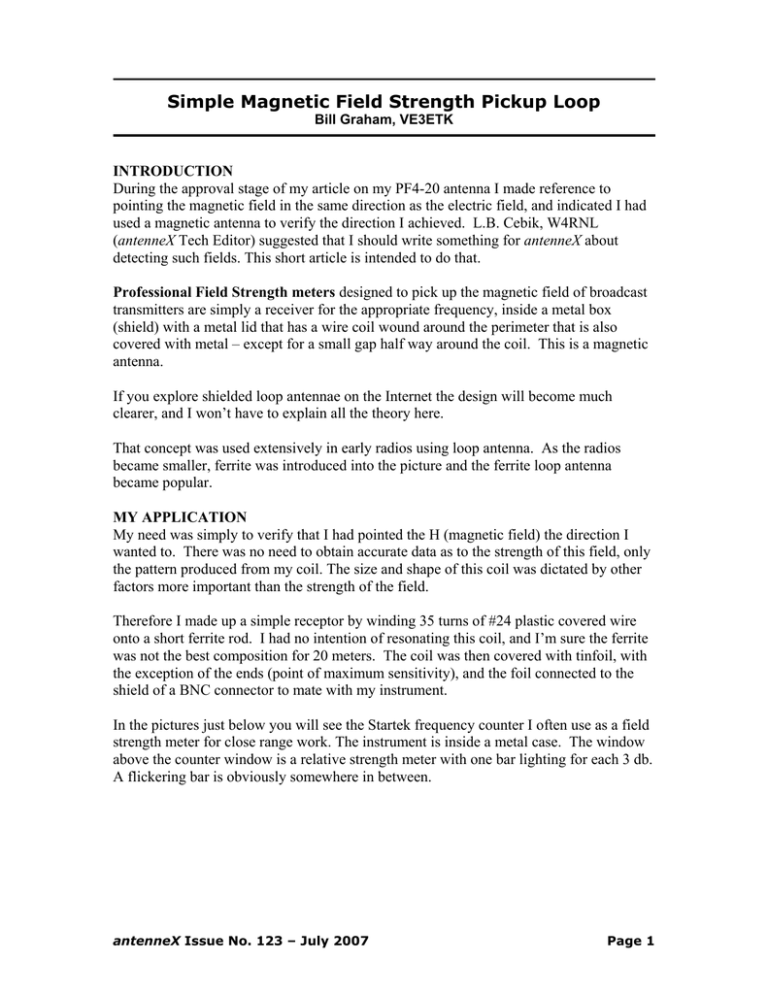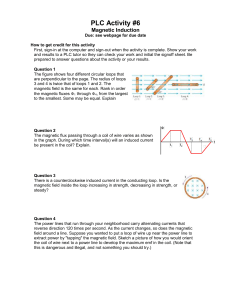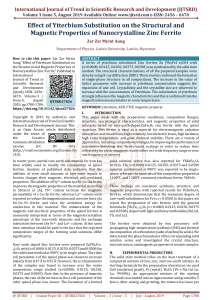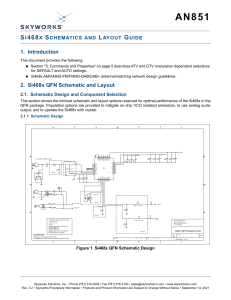
Simple Magnetic Field Strength Pickup Loop
Bill Graham, VE3ETK
INTRODUCTION
During the approval stage of my article on my PF4-20 antenna I made reference to
pointing the magnetic field in the same direction as the electric field, and indicated I had
used a magnetic antenna to verify the direction I achieved. L.B. Cebik, W4RNL
(antenneX Tech Editor) suggested that I should write something for antenneX about
detecting such fields. This short article is intended to do that.
Professional Field Strength meters designed to pick up the magnetic field of broadcast
transmitters are simply a receiver for the appropriate frequency, inside a metal box
(shield) with a metal lid that has a wire coil wound around the perimeter that is also
covered with metal – except for a small gap half way around the coil. This is a magnetic
antenna.
If you explore shielded loop antennae on the Internet the design will become much
clearer, and I won’t have to explain all the theory here.
That concept was used extensively in early radios using loop antenna. As the radios
became smaller, ferrite was introduced into the picture and the ferrite loop antenna
became popular.
MY APPLICATION
My need was simply to verify that I had pointed the H (magnetic field) the direction I
wanted to. There was no need to obtain accurate data as to the strength of this field, only
the pattern produced from my coil. The size and shape of this coil was dictated by other
factors more important than the strength of the field.
Therefore I made up a simple receptor by winding 35 turns of #24 plastic covered wire
onto a short ferrite rod. I had no intention of resonating this coil, and I’m sure the ferrite
was not the best composition for 20 meters. The coil was then covered with tinfoil, with
the exception of the ends (point of maximum sensitivity), and the foil connected to the
shield of a BNC connector to mate with my instrument.
In the pictures just below you will see the Startek frequency counter I often use as a field
strength meter for close range work. The instrument is inside a metal case. The window
above the counter window is a relative strength meter with one bar lighting for each 3 db.
A flickering bar is obviously somewhere in between.
antenneX Issue No. 123 – July 2007
Page 1
Figure 1
antenneX Issue No. 123 – July 2007
Page 2
Figure 2
The picture in Figure 1 shows the whip antenna used for normal field strength, while
Figure 2 shows my little shielded ferrite rod encased in a short length of PVC pipe. It is
securely glued in place and the BNC connector securely attached to the pipe.
Such a concept would also work well with a more sensitive Field Strength meter as long
as the meter and all connections from the ferrite rod are short and well shielded.
This worked well for my purposes and was inexpensive and easy to construct.
-30-
antenneX Issue No. 123 – July 2007
Page 3
ABOUT THE AUTHOR
Bill Graham, VE3ETK, worked at CFPL-TV as a Production
Technician in the 1950's. He moved to CFTO-TV as an
Audio Engineer, then to CHYM-AM/FM in the mid 1960's to
serve as Chief Engineer.
His first radio license was issued in 1964. The years that
followed were busy with consulting work and designing
radio and television studios, culminating with a six-week
stint in Singapore. Now retired, he enjoys all aspects of Amateur Radio.
antenneX Online Issue No. 123 — July 2007
Send mail to webmaster@antennex.com with questions or comments.
Copyright © 1988-2007 All rights reserved - antenneX©
antenneX Issue No. 123 – July 2007
Page 4







